Mekong Delta: The Mekong Delta is the region in southwestern Vietnam where the Mekong River approaches and empties into the sea through a network of distributaries. It officially starts about 100 km to the south west of Ho Chi Minh City. The delta region encompasses a large portion of southeastern Vietnam of 39000 km2.
This vast delta is formed by the mighty Mekong River which has its origin in the Tibetan highland plateau and makes its way through China, Myanmar, Laos, Cambodia and South Vietnam before flowing out into the South China Sea. The Mekong’s Vietnamese name, Cuu Long, means Nine Dragons for nine tributaries.
The Mekong Delta, often referred to as Vietnam’s rice basket, is the biggest rice-growing region in the country which produces three harvests a year and provides 60% of nation’s rice. Besides that, Mekong delta is the place of different tropical fruits such as durian, coconut, banana, pineapple, dragon fruit… The majority of Vietnam’s fruits come from the many orchards of the Mekong Delta. People come here can enjoy the seasonal fruits all round year.
Mekong Delta is divided into 9 provinces. The main towns of the delta are My Tho, Vinh Long, Can Tho and Chau Doc.
The area is both riparian and deeply rural, but it’s also one of Vietnam’s most densely populated regions. The people in this region are made up of Vietnamese and people of Khmer, Chinese and Cham origin. This accounts for the variety of religions that add to the cultural diversity of this area. Among the religions practiced here are: Buddhism, Catholicism, Cao Dai, Hoa Hao and Islam.
How to get there
While a number of the provinces have a border with Cambodia and some do cruise down the Mekong from Phnom Penh into Vietnam, the vast majority of visitors arrive via Ho Chi Minh City to the east. It has great connections with the rest of Vietnam and of course abroad via the International Airport. Travel by road from Ho Chi Minh City is straightforward and comfortable.
Best time to visit
December to May is the dry season so that is the best choice for Vietnam travel packages that include the Delta. It does not mean that the other months should be ignored. There is flooding at times but just because it is the rainy season it does not mean that Vietnam private tours need be spoilt. The rain may just be an afternoon shower with the rest of the day dry.
The Delta
Flooding is an issue in the Delta and there has been considerable research to identify what might happen in the years to come if ‘’global warming’’ continues. Drought would reduce the Delta’s size but if sea levels rose just a metre not only would there be extensive flooding but salinity would greatly damage its agricultural production.
The population of the Delta is over 17 million living in 13 provinces; there are some Khmer who originate in Cambodia and ethnic Chinese but the vast majority are Viet. Their livelihoods revolve around agriculture (this is the most fertile region in Vietnam) and fishing though tourism is certainly adding to the economy.
• Can Tho is the gateway to the Mekong Delta and the place where many waterways meet. It has a busy port and industry includes bottling and fish sauce.
• An Giang with a Cambodian border and some hills, this province is the top rice producer in Vietnam. The economy involves fishing and handicrafts while there are several festivals. Sam Mount is worth a visit while cave exploration is another interesting activity.
• Bac Lieu has evidence of the French yet the invasion of salt water has made agriculture difficult. There is some fishing and salt production as well as fruit orchards. This province is probably the best of several good ones for birds.
• Ben Tre is great for boat trips. It is famous for its coconut candy which you can watch being made.
• Ca Mau is in the far south and has a coastline of over 300 km. There is flora and fauna, and a great variety of birds to study, some forests and fishing is very important. There are offshore islands; Hon Khoai has historical significance relating to a former insurrection.
• Dong Thap includes the Tram Chim National Park famous for the rare Sarus Crane. The best months for birdwatching are January to March. Sa Dec Flower Garden has blooms all year round and Go Thap Oc Eo is a cultural village with reminders of Funan Empire of the 1st to 6th Century.
• Hau Giang is a very fertile province and the Phung Hiep Floating Market provides amble evidence of that. It attracts visitors from many places in Vietnam and abroad to see the snake dance and taste snake liquor. Long My is very interesting for those interested in history while the bird sanctuary has great appeal for ornithologists.
• Kien Giang close to Cambodia has 200 km of coastline and fishing is an extremely important activity. Shark, blue fish, mackerel and shrimp are just a few of its species. It is a fertile region with plenty of historical and natural attractions. The Temple and Tomb of Nguyen Trung Truc in Rach Gia is probably the highlight though there are other tombs, pagodas as well as caves and forests. There are many islands offshore as well.
• Long An is close to the Cambodian border and numerous waterways crossing the province in all directions. There is evidence of the Oc Eo culture from the 1st to 6th Centuries attracting tourists. In addition visitors should see the House with Hundred Columns, Rach Coc Fort and the Ton Thanh Pagoda.
• Soc Trang in the east has few tourist visitors. It is known for its rice, orchards and shrimp farms. The Bat Temple and Clay Pagoda are worth seeing while the Oc Om Boc Festival to the Moon God sees the release of lanterns into the air to chase away the darkness.
• Tien Giang in the north is a diverse province. It has a coastline but is also important for its freshwater fish. There is plentiful fruit and vegetables and an interesting floating market in Cai Be.
• Tra Vinh is the alluvial coastal region in the west and home to many Khmer people. There are 140 Khmer pagodas as opposed to just 50 Viet and 5 Chinese. Unlike in Cambodia the Khmer monks do get involved in agriculture rather than relying on donations.
• Vinh Long is very flat and good for agriculture, fruit and rice. There are plenty of pagodas and communal houses to visit and it is nice to walk around when the climate permits.
Things to see and do
You are spoilt for choice in the Mekong Delta as this Mekong Delta travel guide is demonstrating. If you wish you can just cruise its waters but there is much more that there is always something interesting on Vietnam family tours:
• Local villages and seeing the people’s daily lives
• The wildlife in the waters, on land and in the air.
• Religious, cultural and historical attractions
• The floating markets
• The coastline
This Mekong Delta merely scratches the surface of this iconic river and its delta. It has played an important role in history and continues to do so for its agricultural contribution to Vietnam and its environmental contribution worldwide.

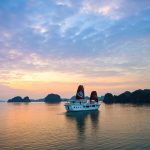


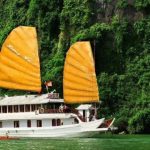

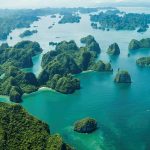


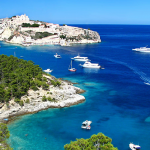
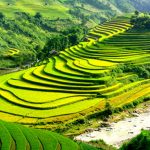
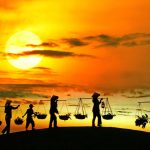


Recent Comments